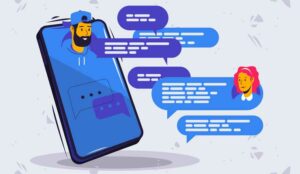Rachel Ashby of Nuance Communications shares how conversational design can make your customers’ lives easier.
Last weekend I got invited to check out a new restaurant in one of the hipster neighbourhoods in Seattle. Given that I don’t live in the hipster scene, I typed in the address on my map app and hit the road.
What came next was an overly complicated journey with difficult-to-navigate streets, hard-to-cross, busy intersections and what I would call a “secret squirrel route” that left me feeling more stressed than supported.
It seems that the map app focused on speed, rather than convenience. And while the map app did its job, for me, it illustrated how the quickest, fastest path isn’t always the best path.
What Is It Like For Your Customers When They Don’t Get the Easy Path?
What may seem like the best route to the people designing your applications may not be the easiest or preferred route for your customers.
In customer service, the end point on the “map” may be paying a bill, or rebooking a flight, or filing a claim. Like an inefficient map, inefficient customer service can lead to consumer frustration.
On the other hand, easy, effortless, convenient customer service can lead to brand loyalty. When your customers contact you, are they encountering an inefficient chatbot or complicated maze of menus, or are you providing an easy, intelligent engagement that leads to task success, customer satisfaction, trust and loyalty?
Interacting Like a Human Takes Work
With the myriad of paths a customer conversation may take, good conversational design is a must-have for any customer care application today.
Also, while there is a plethora of technologies available today that can provide question-and-answer capability with ease, building effective conversational applications that can interact like a human requires specialised skills.
Conversational design isn’t simply accessing AI technology – it’s an expert process of creating experiences that are human-centric, social and interactive, grounded in communication principles, regardless of mode of interaction.
Effective conversational design that can handle the complexity of human interaction takes work – a lot of it. Today, the process involves subject-matter experts sitting down with conversational designers to script paths according to business processes. It’s a highly manual, time-consuming and often lengthy process, prone to human error.
Using a map app analogy, imagine the many ways you might be instructed by a human to get to a new restaurant across town: “Don’t take the motorway”, “Avoid the toll road by going this way”, “Take the scenic route”, or “I go down the back alley to save time”.
Inevitably, there are missed turns along the way, or preferences that are anecdotal that may not deliver the easiest route.
The Best Path Forward
As consumer demands (and expectations) for intelligent conversational applications increase, organisations must find more efficient and effective ways to ensure high quality conversational design.
One path forward to accelerate conversational design is a new category of conversational tools – Conversation Accelerator Tools.
These tools allow organisations to leverage the terabytes of data they already accumulate today, ingest the data to discover the most helpful answers to commonly asked questions and potential problem areas, and automate the build of effective “conversation maps” for their customer care applications.
This data-driven approach results in more natural and accurate scripts, opening the door for more organisations to deploy highly intelligent assistants that consumers will love, while also providing insights that lead to opportunities for strengthening customer relationships.
No tool today can completely displace the critical need for conversational design expertise – but it sure beats the secret squirrel route approach!
Author: Guest Author
Published On: 12th Apr 2019 - Last modified: 16th Apr 2019
Read more about - Guest Blogs, Nuance





































